This article was co-authored by Clinton M. Sandvick, JD, PhD. Clinton M. Sandvick worked as a civil litigator in California for over 7 years. He received his JD from the University of Wisconsin-Madison in 1998 and his PhD in American History from the University of Oregon in 2013.
There are 9 references cited in this article, which can be found at the bottom of the page.
This article has been viewed 54,777 times.
To copyright something means to claim that you are the owner of that intellectual work, such as a painting or poem, a commercial slogan, a musical score, or computer program. For a copyright to apply, the work must already have been created; you cannot copyright the idea for a creative work. Under Canadian law, an implicit copyright automatically exists when the original work is created, but a registration of copyright protects that creation and verifies that you are the creator and owner.[1] It is important to learn how to copyright in Canada, in case you have to show a court you own a copyrighted work.
Steps
Submitting an Application to Register your Copyright
-
1Ensure that you need a copyright. All three of these provide legal protection, but cover different forms of material. If you have created commercial branding or a new invention, rather than a creative work, you may need to apply for a trademark or a patent, rather than a copyright.
- Copyright covers original artistic work (musical, artistic, literary, or dramatic) and gives the work’s creator the exclusive legal right to reproduce and perform the work.[2]
- Trademarks are designed to protect commercial brands; they limit use of specific words and designs which describe a specific brand.[3]
- Patents protect the development of new technology, or improvements made to already existing technologies. A patent limits production and sales of an invention.[4]
-
2Visit the Canadian Intellectual Property Office (CIPO) website. Nearly all of the Canadian copyright registration process is carried out online, through the CIPO website. This site contains all of the relevant information for filing a copyright in Canada.Advertisement
-
3Click on “Copyright,” on the top of the page. The site advises visitors to read the “Guide to Copyrights” before beginning the copyright application process.
- Click on the “Guide to Copyrights” link and study the information on that page. This will provide information about what a copyright is, what it protects, how long a copyright lasts in Canada, and provide further detailed bullet points about how to prepare and submit your application for copyright registration.[5]
-
4Return to the main “Copyright” page and click on “Register Your Copyright.” This link will help you begin registering your intellectual property copyright.
-
5Read the page and click on the “My Industry Canada Account” link. Before you click on the copyright e-filing application form link, you will need to setup an Industry Canada account. This will allow you to pay for the application fee.
- You need to have your username and password already created, because the form is on a secure server.
-
6Click on “Login to the copyright e-filing application” and fill out the application. You can both fill out and submit the entire application from this link. To register your copyright, you will need to title your work and place it within a category: photograph, music, artistic work, literary work, or dramatic work.[6]
- If your work fits in multiple categories, you will still need to select one of the categories. Pick the one that best suits your work.
- Read through your application to ensure it is correct and complete.
- For your own private records, print the completed application or save it on a flash drive.
-
7Pay for the copyright application. CIPO accepts various forms of payment, including credit and debit cards, checks, wire transfers, and deposit accounts.[7]
- From the main Copyright page, click on “View fees” on the center of your screen to see the applicable fees.
- Make payment online, using one of the acceptable payment methods. Payment for copyright registration costs $50.
- If you do not have a credit card or prefer not to use one, set up a CIPO deposit account. Email CIPO’s Finance, Integrated Planning and Administration office to set up your account. You can also open an account by mailing information to CIPO office at Place du Portage 1, 3rd Floor, Room 304 C, Gatineau, Quebec, K1A 0C9.
- You will have to pay $65 if you open a CIPO deposit account to pay for your copyright application.
-
8Receive your registration certificate. Once you have submitted the registration form, either online or by mail or fax, you will receive a registration certificate within five to seven business days.
- If there is a problem with your filed application, CIPO will inform you within one week from the date of filing.[8]
Protecting your Copyright
-
1Add a copyright notice to your work and to all authorized reproductions. Every copyrighted work should be marked with the copyright symbol—©—and the copyright owner’s name, followed by the year the work was published. This will let others know that the work is an original creative work, and that they cannot legally reproduce the work or sell a reproduction.
- Remember that your creative work is still copyrighted, even if it does not have the “©” symbol physically printed on it. The printed symbol serves primarily to remind others that your work has been copyright, and is not theirs to reproduce.
-
2Stop violations of your copyright. If you become aware that an individual or company is reproducing or selling your copyrighted work without your permission, the correct legal step is to send them a Cease and Desist “Copyright Infringement” letter.
- The Cease and Desist letter communicates your ownership of the copyrighted work, and asks that the violator cease using the copyrighted creative work.
- An attorney (or, often, the website of a legal firm) can provide you with a form letter; you’ll need to fill in specific details.
-
3Take the copyright violator to court. If the offender continues to violate your copyright, you can take them to court to sue for damages. The judge may also issue a Cease and Desist Order, which prohibits the violator from using your copyrighted material.
- Under Canadian law, copyright violation can be punished with up to a $5,000 fine for infringement claims and damages.[9]
Warnings
- Do not file a copy of your work when you register a copyright. The Canadian Intellectual Property Office returns all works sent to its office.⧼thumbs_response⧽
Things You'll Need
- Computer with Internet access
- Printer
- Flash drive
- Credit card or CIPO deposit account
References
- ↑ http://www.cipo.ic.gc.ca/eic/site/cipoInternet-Internetopic.nsf/eng/h_wr02281.html#protectValuableCreations
- ↑ http://www.ic.gc.ca/eic/site/cipointernet-internetopic.nsf/eng/wr03719.html?Open&wt_src=cipo-cpyrght-main
- ↑ http://www.ic.gc.ca/eic/site/cipointernet-internetopic.nsf/eng/wr03718.html?Open&wt_src=cipo-tm-main
- ↑ http://www.ic.gc.ca/eic/site/cipointernet-internetopic.nsf/eng/wr03716.html?Open&wt_src=cipo-patent-main
- ↑ http://www.ic.gc.ca/eic/site/cipointernet-internetopic.nsf/eng/h_wr02281.html?Open&wt_src=cipo-cpyrght-main&wt_cxt=banner
- ↑ http://info.legalzoom.com/copyright-something-canada-20150.html
- ↑ http://www.ic.gc.ca/eic/site/cipointernet-internetopic.nsf/eng/wr03055.html
- ↑ https://www.ic.gc.ca/eic/site/cipointernet-internetopic.nsf/eng/wr00039.html?Open&wt_src=cipo-cpyrght-main
- ↑ http://www.michaelgeist.ca/2012/11/canada-copyright-damage-awards/
About This Article
To apply for a copyright in Canada, start by visiting the Canadian Intellectual Property Office website and clicking on “Copyright” at the top of the page. Next, select “Register your copyright” to set up an account and pay the application fee. Once you have an account, log in to fill out the e-filing application, making sure to select the appropriate category for your copyright, such as music or literary work. After double checking your application to make sure it’s correct, submit it online and expect to wait up to a week to receive the registration certificate. For advice from our Legal reviewer on how to protect your copyright if someone is using it without permission, keep reading.
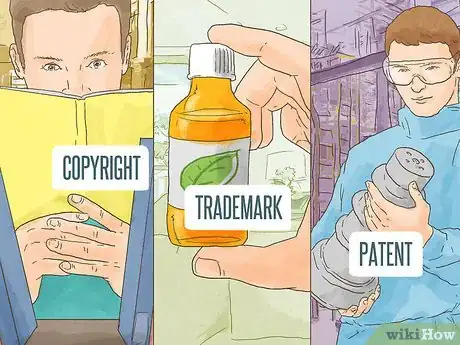

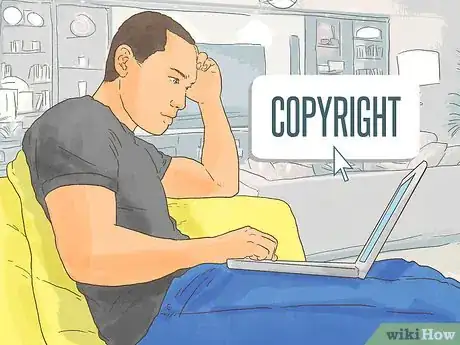


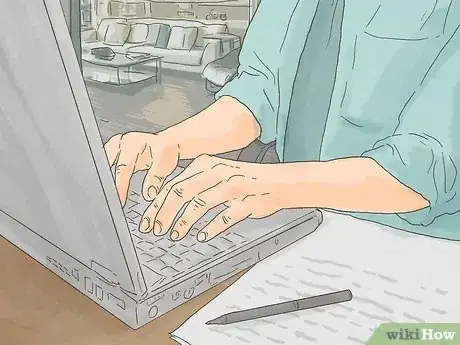

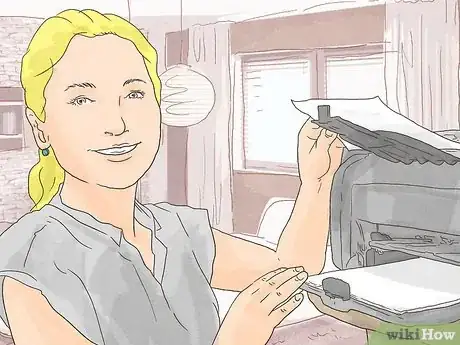

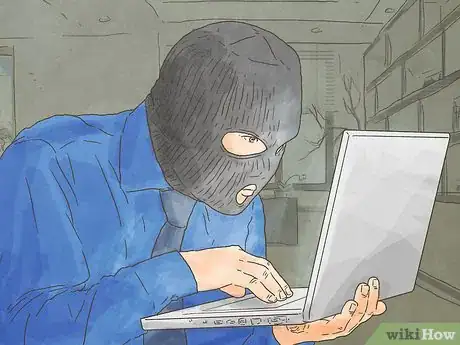
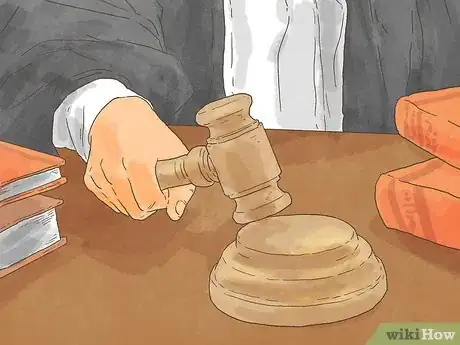




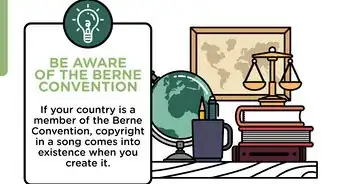




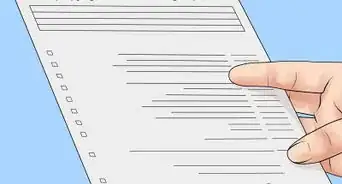

-Step-13.webp)














































